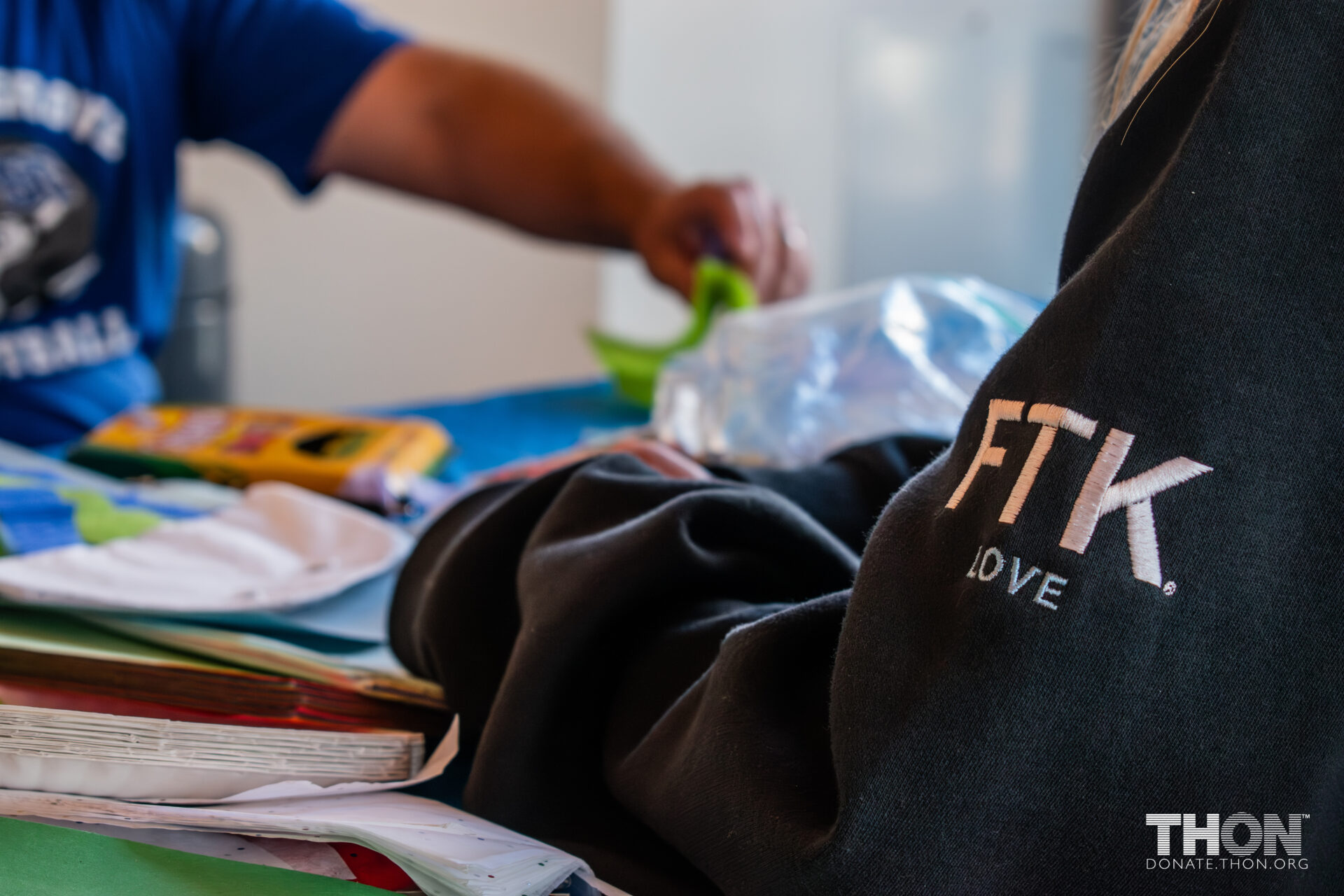
THON™ is committed to enhancing the lives of children and families impacted by childhood cancer. The THON community works year-round to raise money for Four Diamonds research, outpatient treatment, nutritional therapy, music therapy, social work, prescription drug co-pays, and more.
As September was Childhood Cancer Awareness Month, we want to highlight some key terms and definitions to share why our mission matters and help our community better understand the challenges children and families face when dealing with childhood cancer.
A biopsy is a procedure that removes a piece of tissue or a sample of cells from a patient’s body so that it can be analyzed in a laboratory. These samples are typically examined under a small microscope. While imaging tests, such as X-rays, help detect masses or areas of abnormality, they alone can’t differentiate cancerous cells from noncancerous cells. Biopsies also help medical professionals determine the stage of cancer and help guide treatment decisions. For most cancers, the only way to make a definitive diagnosis is to perform a biopsy.
Cancerous tumors are malignant, which means they can spread into, or invade, nearby tissues uncontrollably. As these tumors grow, some cancer cells can break off and travel to distant places in the body through the blood or the lymph system and form new tumors far from the original tumor. This is known as metastasis.
A flexible tube inserted through a narrow opening into a body cavity, particularly the bladder, for removing fluid.
A phase of Acute Lymphoblastic Leukemia (ALL) treatment which involves intense chemotherapy. This is performed when the amount of Leukemia cells is low to destroy this small, resistant group of cells. This is typically the last phase before the maintenance phase of chemotherapy begins.
An echocardiogram is a type of ultrasound which is a non-invasive imaging test that checks the structure and function of your heart. Echocardiograms can be performed after any cancer diagnosis that is potentially harmful to the heart.
A lumbar puncture — also known as a spinal tap — is used to collect the cerebrospinal fluid (CSF) surrounding the brain and spinal cord to detect disease, infection, or injury. A lumbar puncture can tell doctors whether blood cancer cells are present in the sample.
A type of cancer that starts in white blood cells called lymphocytes, which are part of the body’s immune system. The lymph system helps to fight infections and some other diseases, and it also helps fluids move through the body. The type of Non-Hodgkin’s Lymphoma that a person has depends on what type of lymphocyte is affected, how mature the cells are when they become cancerous, and other factors.
A port is a small medical device that is surgically installed beneath the skin and is used to draw blood and give treatments, including intravenous fluids, drugs, or blood transfusions. The port is placed under the skin, usually in the chest. It is attached to a catheter (a thin, plastic, flexible tube) that is guided (threaded) into a large vein above the right side of the heart called the superior vena cava. The catheter allows for the delivery of medicine, blood products, nutrients, or fluids to the bloodstream. Chemotherapy is typically given using a Mediport. A port may stay in place for many weeks or months, but it can also remove blood for testing. A needle is inserted through the skin into the port to draw blood or give fluids.
A decrease in or disappearance of signs and symptoms of cancer. In partial remission, some, but not all, signs and symptoms of cancer have disappeared. In complete remission, all signs and symptoms of cancer have disappeared, although cancer still may be in the body.
Stem Cell Transplant is used to replace bone marrow that has been destroyed by cancer or treatments for cancer. This is important because high doses of chemotherapy and radiation often kill stem cells and prevent the production of new blood cells, which we need to live.
The most common form of kidney cancer in children. Within the United States, over 500 children are diagnosed each year, and 75% of those pediatric patients are under 5 years old. Typically, one or more tumors are found on one or both kidneys. It may spread to the lungs, liver, bone, brain, or lymph nodes.
To ensure that THON is able to donate 96 cents of every dollar raised to Four Diamonds at Penn State Health Children’s Hospital, we heavily rely on donor support. These donations provide us the resources to create endless memories for our Four Diamonds families & foster a deep love & connection to our mission for our volunteers through Pre-THON Events, alternative fundraisers, & THON Weekend.
